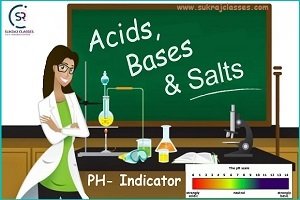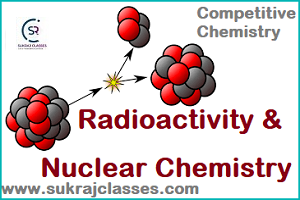
Periodic Table of Elements and It’s Facts – Competitive Chemistry
Chemistry topic- “Periodic Table of Elements and It’s Facts”, is important for all competitive exams like CET- Common eligibility Test, SSC CGL, SSC CHSL, RRB NTPC, UPSC and other state civil services exams. In these exams, almost 4-5 questions are coming from Chemistry. Let’s start the topic:
PERIODIC TABLE OF ELEMENTS and ITS FACTS:-
The periodic table is an arrangement of the chemical elements.
OLD PERIODIC OR MENDELEEV’S PERIODIC TABLE:-
- Old periodic table was given by Dimitri Mendeleev in 1869 on the base of arranging chemical elements by atomic mass.
- It contains 6 periods and 8 groups.
LIMITATION OF OLD PERIODIC TABLE:-
- O group (inert gases) is absent in this table.
- It has no fixed position for hydrogen.
- It has no space for isotopes.
- The atomic masses do not increase in a regular manner in going from one element to the next.
- It has not a proper arrangement of atomic masses.
Note: The defects of Mendeleev periodic table were removed by Henry Moseley who put forward the modern periodic law in 1913.
MODERN PERIODIC TABLE:-
The modern periodic table lists the elements in order of increasing atomic number (the number of protons in the nucleus of an atom).
There are total of 118 elements known so far and the discovery of new elements still continues.

IMPORTANCE OF PERIODIC TABLE:-
With the use of periodic table we can quickly discern (identify) the properties of individual elements such as their mass, electron number, electron configuration, ionization potential, electron affinity, electronegativity and their unique chemical properties.
- Periodic table divided into groups and periods.
- The vertical rows are called groups and horizontal rows are called periods.
- There are 7 periods and 18 groups in modern periodic table.
PERIODS:-
The maximum number of electrons that can be accommodated in a shell depends on the formula 2 where ‘n’ is the number of the given shell from the nucleus.
For example, K Shell – 2 × (1)² = 2, hence the first period has 2 elements.
| Periods | Stable Electronic Configuration | Number of Electrons |
| First | 1s2 | 2 |
| Second | 2s22p6 | 8 |
| Third | 3s23p6 | 8 |
| Fourth | 4s23d104p6 | 18 |
| Fifth | 5s24d105p6 | 18 |
| Sixth | 6s24f14sd106p6 | 32 (Including lanthanoids) |
| Seventh | _ | 19 (Including Actinoids) |
1st Period –
- This period contains 2 elements.
- It is called Very short period because it contains those elements (2) which have number of electrons in the shell is 2.
2nd and 3rd period –
- These periods contain 8 elements.
- These periods are also called Short periods.
- Elements that belong to period 2 of the periodic table are called Bridge Elements.
- Elements that belong to period 3of the periodic table are called Typical Elements
4th and 5th period –
- These both periods contain 18 elements.
- These periods also known as Long period.
6th period –
- 6th period contains 32 elements (lanthanides)
- This is Very Long Period because it have 32 elements.
- 6th period elements are called
7th period –
- This is Incomplete Period
- 7th period elements are called actinides.
BLOCK:-
- In periodic table 18 groups are present. Periodic table divided into 4 blocks.
- s-block, p-block, d-block and f-block depending on the type of atomic orbitals that are being filled with electrons.
s-block: –
- s orbital contains 2 electrons hence 2 groups.
- s block contains 2 groups
- 1st group Alkali Metals – H, Li, Na, K, Rb, Cs, Fr – (radioactive element)
- 2nd group elements are Alkaline Earth Metals – Be, Mg, Ca, Sn, Br, Ra – (radioactive element)
- They are all reactive metals.
- These element are electropositive and soft metal.
p-block:-
- The p-Block Elements comprise those belonging to Group 13 to 18.
- p orbital contains 6 electrons hence 6 groups.
- Group 13-Boron family, Group 14 Group 16-oxygen family, Group 17 called transition metals.
- Group 17 elements (non-metals) are most reactive, because they can give electron easily to become stable and form negative ions.
- Group 18 elements (noble gases) have a very stable electronic configuration in their outermost shell. Their valency is zero because they do not lose/gain electrons. This makes them unreactive.
- This block consist metal, non-metal and metalloid.
d-block: –
- The d-block contains elements of group 3 to 12 of the periodic table.
- d orbital contains 10 electrons hence 10 groups.
- Group 3 to Group 12 elements are called Transition elements.
- Elements of this block contain unpaired electrons. So, d block elements are para magnetic in nature and use as a catalysts.
- They are all metals.
- Out of all the d-block elements mercury is the only liquid elements.
f – Block:-
- The elements from atomic number 58 to 71 are called lanthanides.
- The elements from atomic number from 90 to 103 are called Actinides.
- All the actinium elements are radioactive.
- These two series of elements are hence called the Inner Transition Elements (f-Block Elements).
- All the elements after atomic number 92 uranium (i.e., U92) are transuranic elements.
Note
- The heavy zig-zag line separates metals from non-metals, with non-metals to the right (except for hydrogen) and metals on the left and middle.
- Metalloids which resemble metals as well as non-metals are on the border line of metals and non-metals arranged in zig-zag manner.
Facts about Periodic Table elements for Competitive Exams:-
- Elements of 1st period have electrons in one shell only (K), 2nd period has 2 shells (orbits) (k, L), 3rd period has 3 shells (K, L, M), 4th period has 4 shells (K, L, M, N) and so on.
- Group 1 elements are called alkali metals, Group 2 are alkaline earth metals, Group 13-Boron family, Group 14 Group 16-oxygen family, Group 17 called transition metals.
- The noble gases are the chemical elements come in group 18. They are helium, neon, argon, krypton, xenon, and radon. They are sometimes called inert gases or rare gases.
- Krypton and Xenon are the only noble gasses that form any compounds at all.
- Hydrogen is a non-metals but kept in Group 1 because it forms H+ ion like alkali metals (Group 1 elements).
- Elements with atomic numbers 58 to 71 are called lanthanoids, kept at the bottom of the periodic table, below lanthanoids.
- Elements with atomic numbers 90 to 103 are called actinoids.
- Properties of elements depend upon the number of valence electrons.
- In a group, all the elements have the same number of valance electrons i.e. same valency.
- Valency is equal to the number of valence electrons or 8-number of valence electrons.
- Valency in a period first increases till middle, then decreases.
- Tendency to lose electrons increases down the group.
- Tendency to lose electrons decreases along a period, from left to right.
- Tendency to gain electrons decreases down the group.
- Tendency to gain electrons increases along a period, from left to right.
- Over 80% of the elements are metals are remaining are non-metals.
- The elements after Uranium (92) are man-made or synthetic elements. Tc (43) and Pm (61) are also man-made elements.
- Group 1 metals are most reactive because they can lose electrons easily to from positive ions.
- Metals are good reducing agents, because they can lose electrons.
- Non-metals are good oxidising agents, because they can gain electrons easily.
- Cations are positively charged whereas anions are negatively charged.
- Elements having 1, 2 or 3 valence electrons are mostly metals. Those elements having 4 to 8 electrons are non-metals.
- Silicon is a metalloid.
- Melting and boiling points rise to the middle of the period, then fall to very low values on the right of period.
- In a period Reactivity decreases along metals, then increases across non- metals. Noble Gases are less reactive.
METALLIC AND NON-METALLIC CHARACTSTICS:-
- In a period from left to right metallic nature decreases while non-metallic character increases.
- In a group metallic character increases from top to bottom while non-metallic character decrease.
VALENCE ELECTRONS: – The electrons present in outermost shell are called as valence electron.
VALENCY: – The number of valence electrons present in the outermost shell of its atom is called valency.
ATOMIC NUMBER: – The nucleus is composed of protons and neutrons. Total number of protons in the nucleus is called the atomic number of the atom.
- It is represented by the symbol Z.
ATOMIC SIZE:- The term atomic size refers to the radius of an atom. The atomic size may be visualised as the distance between the centre of the nucleus and the outermost shell of an isolated atom.
In periodic table Atomic size goes on increasing down the group whereas goes on decreasing along the period from left to right.
ATOMIC MASS NUMBER: – The mass number is defined as the total number of protons and neutrons in an atom.
- It is represented by the letter ‘A.’
- It is equal to “Z + N = A”
ELECTRONEGATIVITY:-
The relative tendency of an atom to attract the shared pair of electrons towards itself is called electronegativity. In a period from left to right, the value of electronegativity increases while in a group from top to bottom the value of electronegativity decreases.
For More:
If you like and think that General Science (Chemistry) topic on “Periodic Table of Elements and It’s Facts” was helpful for you, Please comment us. Your comments/suggestions would be greatly appreciated. Thank you to be here. Regards – Team SukRaj Classes.





